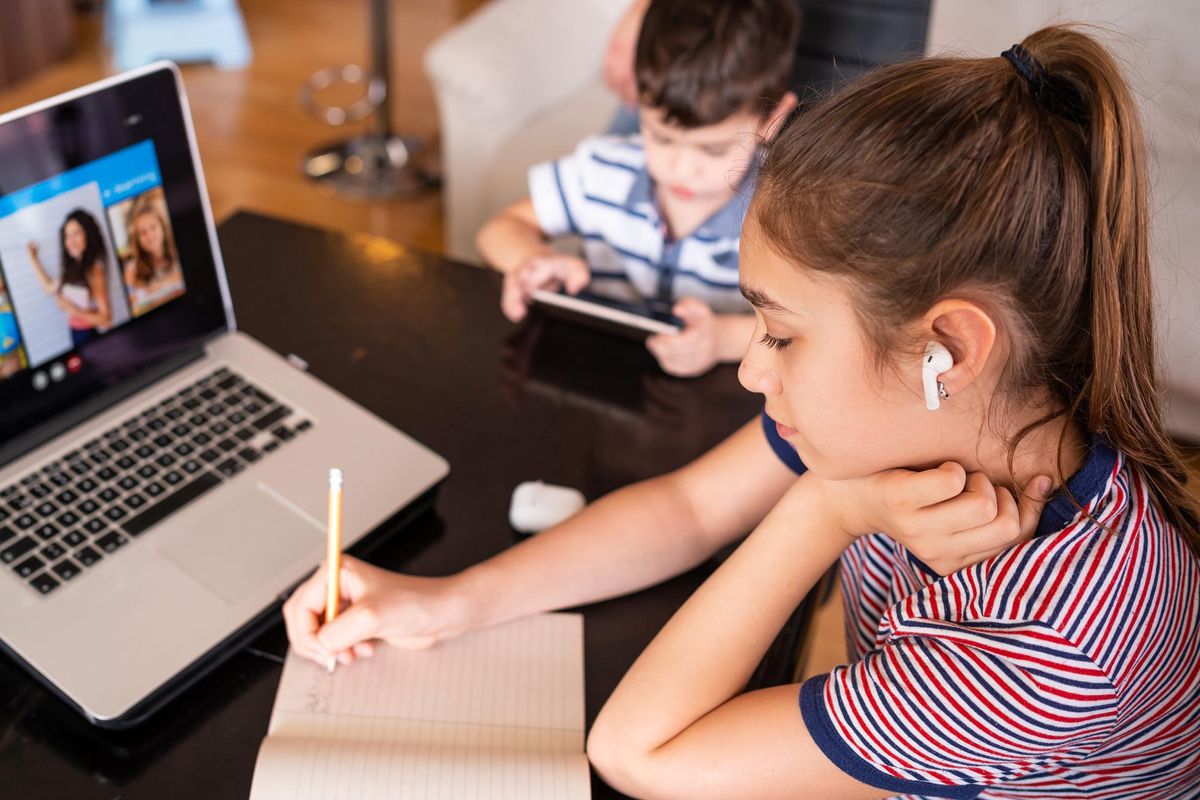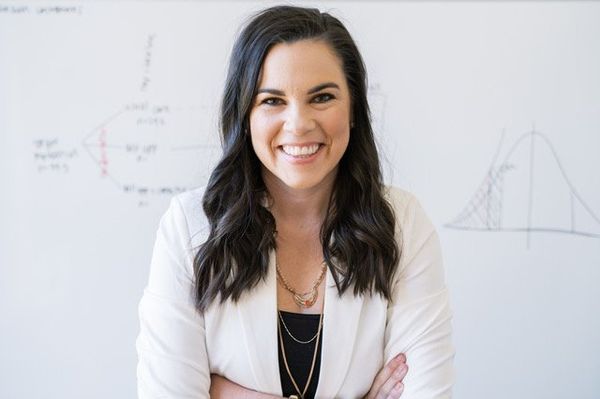Mari Altshuler, Northwestern University
On Aug. 30, 2021, my kid joined millions of children in walking through school doors as he began first grade.
Despite the ongoing pandemic, school buildings are almost universally open. While there are many voices expressing health and safety concerns, policymakers have decided that the best choice for children's well-being is for them to be in school, in person in all but the most extreme cases of medical need.
But what if we asked the children? What would they say? News articles have quoted teenagers reflecting on Zoom fatigue and loneliness, but much less has been reported about what our youngest students think. Children have now experienced nearly a year and a half of schooling during a pandemic, and this presents an opportunity to pause, reflect on and learn from their experiences.
As a Ph.D. student in learning sciences and a math education researcher who believes that young children are perceptive, reflective and brilliant, I embarked on a project to collect children's stories of schooling during the pandemic.
Throughout 2020, I talked to 30 children, ages 5-8, across gender, race and ethnicity, enrolled in public and private, urban and suburban schools throughout the Chicago area, about their recent school experiences. The focus of our conversations was on their math learning specifically, but the takeaways are much broader. Children's stories of what they missed about being physically in school, and what they didn't, painted a complex picture of joy and frustration, relief and stress.
In sharing some of these stories below, I have used pseudonyms to protect the children's identities.
Slower access to help, but less pressure
Torrin, who loves Minecraft and Legos, was experiencing second grade virtually when I first talked to him. He shared that he missed being at school because he could get help from his teacher right away.
“At home, you have to email the teacher and wait to see if she can help," he said. Several students expressed a similar desire to talk with teachers more easily.
Still, in some ways Torrin preferred being at home. He was more relaxed and less anxious about “bad grades." He explained that though he still had to do stressful, timed tests, his iPad app was more forgiving than the paper tests at school. If he didn't finish on time, he could try again. In school, he had to turn in tests without second chances.
Despite repeated research documenting the anxiety produced by timed tests, they remain common in elementary school math classrooms. For Torrin, virtual learning offered just a bit of a respite.
Less rushed, but missing friends
Kira, a third grader, also said she felt more relaxed at home. While answering my questions, she showed me her personal journal, proudly noting that her springtime entries were much longer than those from earlier in the school year. At home, Kira felt less rushed, so she did a better job on her schoolwork. Also, she wasn't worried about being graded for the wrong things.
“Now, they won't judge you on your handwriting," she told me.
But, like many of the children I spoke with, Kira missed her friends. “I like learning at school because my friends helped me with my work when I needed help." Research supports Kira's sentiment that collaboration with peers is important for learning.
Freedom to move around
Like other students, Suriyah, a first grader, desired physical freedom.
"I like that now, usually, I can move around. But in the classroom, we either stay in our seats or go to certain places that my teacher tells me to go," she said.
At home, Suriyah usually did her schoolwork at the kitchen table with her older sister. Sometimes, when she wanted a quieter space, she retreated to her bed and propped her iPad on the footboard.
Many children similarly told me how much they liked that at home they could get up and move. But others expressed the opposite – at school, their teachers arranged their classrooms with flexible seating, which offered the children choices for how to sit and where to work, and they missed that freedom because at home they felt confined to a single spot at a computer screen.
Going forward
Young children vary in their desires, preferences and experiences. My first grader spent his kindergarten year almost entirely virtually. Sometimes he bemoaned having to log on to his class meetings, but other times he couldn't wait to update his classmates on the story he was writing. He wished he could play with his peers on the playground, but he was glad to have breaks between classes to relax and play at home.
When I asked young children about their experiences in school during this pandemic, they didn't engage in fear-mongering about academic loss or fixate on the virtual versus in-person binary. They recognized that there are benefits and drawbacks to different learning settings and structures.
[Over 100,000 readers rely on The Conversation's newsletter to understand the world.Sign up today.]
Whether learning in a classroom or kitchen, when I asked children to reflect on their schooling, they emphasized the importance of relationships, flexibility and freedom. They wanted the opportunity to interact with their peers and teachers, to learn in spaces that are joyful and encouraging, to be able to mess up and try again, and to be able to move. These are things that many researchers, educators and families agree are critical for meaningful learning and development.
As children return to school this fall, I believe this is an opportunity to learn from their nuanced understandings of what works and what doesn't, and to recognize that different children need different conditions to thrive.![]()
Mari Altshuler, Ph.D. Candidate, Learning Sciences, Northwestern University
This article is republished from The Conversation under a Creative Commons license. Read the original article.







